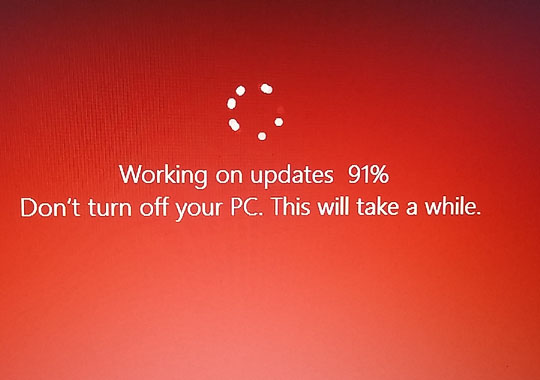Added 1 new A* page:Normally I stream my daily drawing and painting of the upcoming A* page live on my Twitch channel (past days' art vids are sped up 6x and archived on my YouTube channel), but I didn't stream today and probably won't tomorrow because my streaming computer, which is normally pretty speedy, is busy with this instead:

I started it last night, and it chugged up to 83% after an hour or two, then stayed there. : P I left it overnight, and by morning it had advanced to 91%! And then it stayed there all day. The drive light flickers now and then—or at least, it had been...hm—so maybe it's still doing something, just really, really, really slowly. Judging by the timing (not that the update tells you...) this is Microsoft's big "Anniversary Update" for Windows 10, and apparently I'm not the only one having this problem with it, so that's some consolation, I guess. "This may take a while," it says. :"P I'll let it run through the weekend, and if it doesn't finish up by Monday, I'll have to reboot it, *hopefully* reverting okay back to the previous version, and then...not accept a Windows update for a few months in the hope that Microsoft works out the kinks in it. : P
~~~~~~~~
Anyway, real news, a Polish team has managed to assemble before, during, and after photos of a white dwarf star 20,000 light years away going nova, says the BBC, complete with cool photo sequence. This white dwarf, whose nova occurred in 2009, is part of a binary, orbiting its companion every five hours—they're so close together, their orbit would fit inside our Sun. The theory in cases like this is that the dwarf sucks material off the companion star, accumulating it on its own surface until "it kicks off a runaway, explosive thermonuclear reaction" that blows the extra material off into space—this is the nova explosion. The white dwarf, back to something like its original mass, survives the explosion and probably goes back to gradually accumulating mass from its partner again, heading for another nova thousands of years down the line.
|
